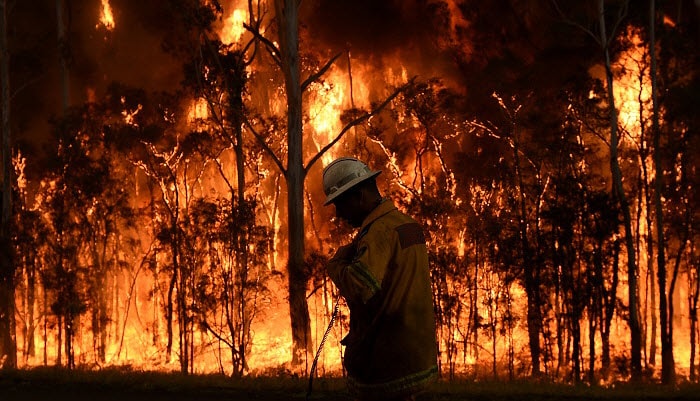Ensuring Bush Fire Security Via Correct BAL Report Evaluation
In the world of bush fire security, the meticulous evaluation of Bushfire Strike Level (BAL) records stands as a foundation for securing buildings versus the devastating influence of wildfires. With environmental aspects and residential or commercial property features playing considerable duties in establishing the level of threat, a thorough understanding of BAL ratings ends up being imperative. Nonetheless, the genuine significance lies not simply in comprehending these records but in analyzing them properly to formulate customized fire security approaches. By delving into the importance of BAL record evaluation, we reveal a world where educated decisions lead the course towards boosting residential property security and strength in fire-prone regions.
Comprehending Bushfire Assault Level (BAL)
In the realm of bushfire security, comprehending the Bushfire Attack Degree (BAL) is paramount for ensuring effective reduction approaches. BAL is a system used to determine the prospective risk a building might deal with from a bushfire. It thinks about aspects such as the kind of plants, the slope of the land, the Fire Danger Index, and the Fire Seriousness Index. Comprehending the BAL rating of a building is crucial for property contractors, proprietors, and policymakers to carry out ideal actions to guard versus bushfire risks.

Relevance of BAL Record Analysis
An important facet in bushfire security planning entails the detailed evaluation of BAL reports to assess the potential dangers and establish suitable mitigation methods. BAL records supply crucial details about the possible impact of bushfires on a property based on different factors such as plant life type, range to possible fire risks, and slope of the land. Examining these records with accuracy is paramount in creating effective bushfire security procedures customized to the particular threat profile of a property.
Executing Fire Protection Steps
Implementing efficient fire defense steps is important for safeguarding properties in bushfire-prone areas. This entails clearing up combustible plant life, such as dry leaves and branches, within a specific span of the residential property.
Additionally, having a sufficient and properly maintained water supply, such as a tank or swimming pool, can help firefighters in their efforts to protect the property. It is essential to have a clear evacuation plan in position and to make sure that all homeowners recognize with the procedures. In addition, having firefighting tools conveniently available, such as hoses and fire extinguishers, can aid in dealing with tiny area fires prior to they intensify. In general, carrying out a mix of reference these fire defense measures can dramatically raise the possibilities of securing homes throughout bushfire events.
Mitigating Dangers in Fire-Prone Locations
To fortify buildings versus bushfire threats, a critical focus on mitigating threats in fire-prone areas is imperative. One vital aspect of risk reduction is maintaining defensible room around residential or commercial properties by getting rid of flammable greenery, guaranteeing ample spacing in between trees and structures, and employing fire-resistant landscape design practices.
Additionally, creating or retrofitting buildings with fireproof materials and making certain correct maintenance of roof coverings, seamless gutters, and outside cladding can substantially enhance the home's durability to bushfires. Developing and exercising a bushfire emergency click to find out more situation strategy with all passengers, consisting of evacuation procedures and communication methods, is additionally vital in mitigating risks properly. By adopting a proactive method to run the risk of reduction in fire-prone locations, homeowner can better secure their assets and boost overall bushfire preparedness.
Ensuring Residential Or Commercial Property Safety and Strength
Ensuring the security and durability of residential properties in fire-prone locations requires a steadfast commitment to durable preventive measures and critical planning. Residential property safety starts with applying reliable actions to reduce fire risks.
Strength, on the other hand, involves the capacity of a property to recover and hold up against from a bushfire. By proactively resolving these elements, residential or commercial property owners can much better shield their possessions and enjoyed ones from the risk of bushfires.
Conclusion
Finally, making sure bushfire protection via correct BAL record evaluation is crucial for recognizing the degree of threat presented by bushfires and applying necessary fire security procedures. By mitigating dangers in fire-prone locations and making sure building security and resilience, individuals and communities can better plan for and react to bushfire events. It is crucial to prioritize fire precaution to secure lives and home in these high-risk settings.
In the realm of bush fire defense, the thorough evaluation of Bushfire Assault Level (BAL) records stands as a foundation for safeguarding residential or commercial properties against the destructive effect of wildfires (BAL Report). Understanding the BAL ranking of a residential property is critical for image source residential or commercial property policymakers, contractors, and proprietors to carry out suitable procedures to secure against bushfire dangers

BAL records offer critical details about the possible impact of bushfires on a home based on various variables such as plants kind, range to potential fire dangers, and incline of the land (BAL Report). On the whole, applying a combination of these fire security procedures can significantly increase the chances of securing properties throughout bushfire occasions